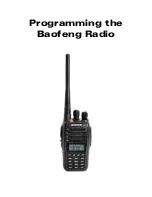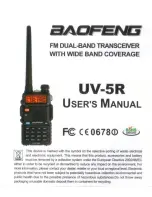
6
Theory
A block diagram of Models 2001 and 2011 is
shown in Figure 1. The photoreceiver consists of a
photodiode followed by a transimpedance amplifi-
er, two adjustable filters, and a final gain multipli-
er (Fig. 1). The responsivity of the silicon photodi-
ode for the Model 2001 is shown in Fig. 2. The
response factor (V/mW) which is a calibration
term that converts measured electrical power to
incident optical power at a specific wavelength is
shown in Fig. 3 for the Model 2001. The optical
power striking the photodetector is equal to the
voltage measured divided by the product of the
gain knob setting, multiplier factor (1 or 3) and
the wavelength response factor. (see Appendix 1:
Optical Input for a specific example.) Figs. 4 and 5
show the responsivity and response factor for the
InGaAs photodetector in the Model 2011.
The noise performance of the Models 2001 and
2011 is determined by the setting of the first stage
while the final gain stage simply scales the signal
for ease of viewing. The NEP is the amount of
optical input power required for the output signal
to just equal the output noise of the optical receiv-
er. It is a measure of the weakest optical signal and
is a function of the wavelength. The NEP as a
function of wavelength on the 10
4
gain setting is
shown in Fig. 6 for Model 2001 and in Fig. 7 for
Model 2011. The NEP increases by a factor of
approximately three for each full clockwise turn of
the gain knob.
Both the photodiode and the circuit are powered
from a ±9-V supply provided by two 9-V alkaline
batteries.
Содержание 2001
Страница 1: ...Models 2001 and 2011 User s Manual Front End Optical Receivers ...
Страница 2: ...2 200110 Rev B Is a registered trademark of New Focus Inc ...
Страница 20: ...20 ...






































